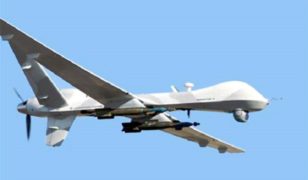USSOCOM plans to establish OTA for intelligence-related R&D
 On March 8, the U.S. Special Operations Command (USSOCOM) released a special notice “for advanced development efforts to support intelligence and information systems technology objectives.”
On March 8, the U.S. Special Operations Command (USSOCOM) released a special notice “for advanced development efforts to support intelligence and information systems technology objectives.”
USSOCOM is releasing this special notice to inform interested parties about the Government’s interest in establishing an Other Transaction Authority (OTA) Agreement under 10 U.S.C. 2371 Section 815 with an eligible entity or group of entities, to include non-traditional defense contractors, industry, academic, non-profit, and not-for-profit entities, for advanced development efforts to support intelligence and information systems technology objectives in enhancing the mission effectiveness of Special Operations Forces (SOF) warfighters.
An OTA will provide a faster and more flexible way of collaborating on unconventional and rapidly evolving Research and Development (R&D) software engineering prototypes from commercial and non-traditional entities who may be unwilling or unable to comply with the Government’s procurement regulations. The goal is to provide USSOCOM access to cutting-edge technologies with a faster product development, tailoring and transition cycle for delivering SOF-peculiar analysis, exploitation, and dissemination capabilities.
TECHNOLOGY OBJECTIVES
Investigate and define strategic operational and Intelligence Information Systems (IIS) capability gaps in order to achieve a common understanding of operating concepts, warfighter needs, stakeholder requirements and how prototype IIS technologies can support current operational requirements. Research, development, and rapid iteration of prototype software technologies that are directly relevant to enhancing the mission effectiveness of deployed SOF and the supporting IIS platforms, components, or subcomponents proposed to be acquired or developed by USSOCOM, or to improvement of IIS platforms, components, or sub-components in use by SOF are encouraged.
Improve Collaboration Across Warfighting Functions: Develop, demonstrate, and transition technologies that improve the speed of situational awareness and precision operations. Enable improved collaboration on intelligence and information systems to synchronize planning and actions to counter transregional terrorist organizations in an increasingly complex security environment. Motivate continuous collaboration and visibility of progress in overcoming technical risks and constraints.
Harness Feedback to Drive CONOPS, TTPs, Requirements and Technology Transition Opportunities: Engage users to identify critical, tangible, focused needs, scenarios, and assessment criteria. Evaluate potential concepts and solutions. Assess, analyze and codify solutions with SOF warfighters. Rapidly iterate and transition effective prototypes into USSOCOM and Service Programs of Record.
Seek Information Dominance to Address Gray Zone Challenges: Develop, demonstrate, and transition technologies that break through gaps and seams of intelligence and information systems to enhance the SOF User Defined Operating Picture for Commanders, operators and analysts. Fuse information on reconfigurable and portable networks across security domains with coalition, partners, and echelons to support discrete core activities ranging from Direct Action, Special Reconnaissance, Counter-terrorism, Hostage Rescue/ Recovery, and Countering Weapons of Mass Destruction, to more enduring engagements such as Unconventional Warfare, Foreign Internal Defense, Security Force Assistance, Counterinsurgency, Foreign Humanitarian Assistance, Military Information Support or Civil Affairs Operations.
Full information is available here.
Source: FedBizOpps








